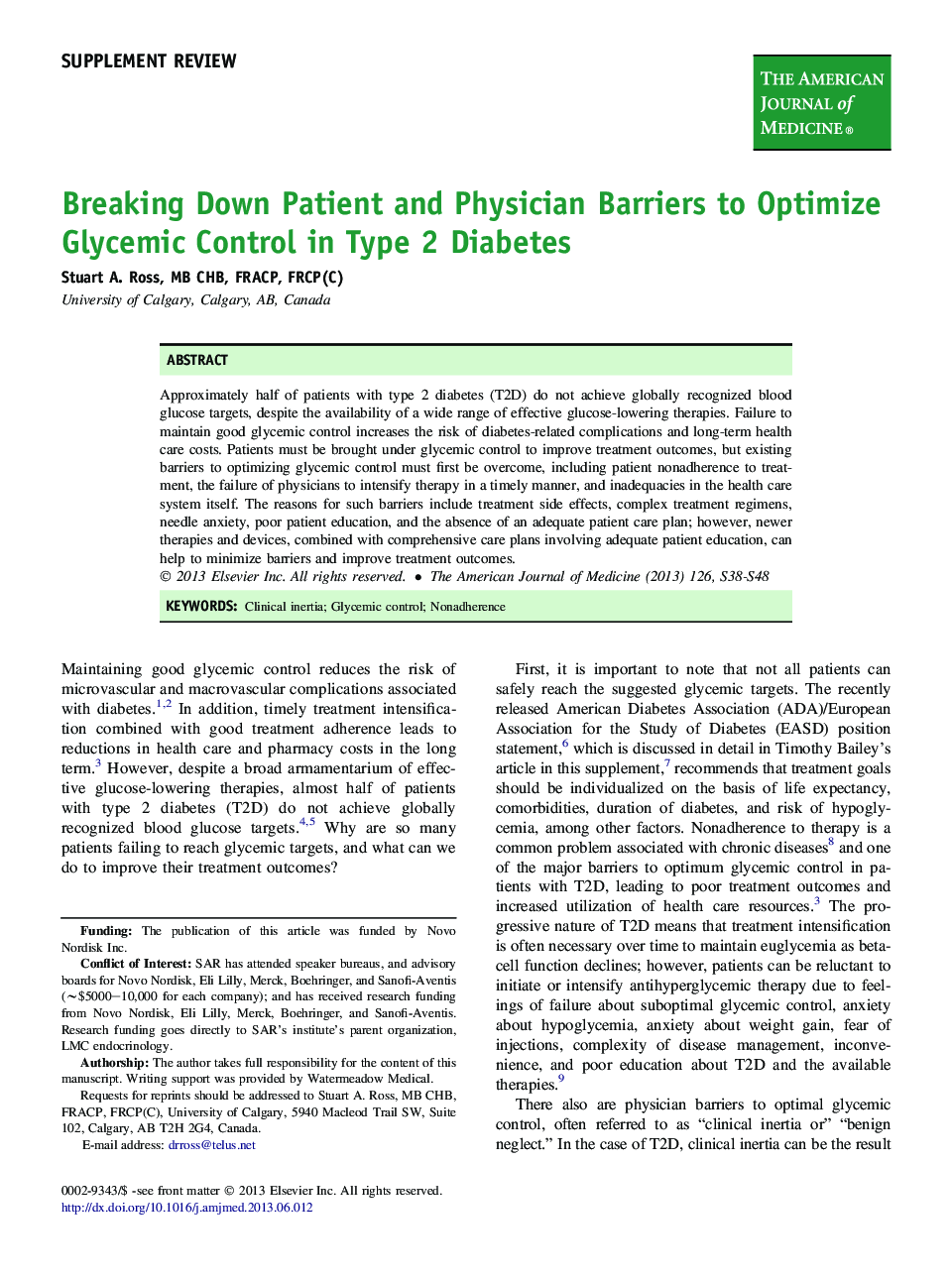| Article ID | Journal | Published Year | Pages | File Type |
|---|---|---|---|---|
| 2723012 | The American Journal of Medicine | 2013 | 11 Pages |
Abstract
Approximately half of patients with type 2 diabetes (T2D) do not achieve globally recognized blood glucose targets, despite the availability of a wide range of effective glucose-lowering therapies. Failure to maintain good glycemic control increases the risk of diabetes-related complications and long-term health care costs. Patients must be brought under glycemic control to improve treatment outcomes, but existing barriers to optimizing glycemic control must first be overcome, including patient nonadherence to treatment, the failure of physicians to intensify therapy in a timely manner, and inadequacies in the health care system itself. The reasons for such barriers include treatment side effects, complex treatment regimens, needle anxiety, poor patient education, and the absence of an adequate patient care plan; however, newer therapies and devices, combined with comprehensive care plans involving adequate patient education, can help to minimize barriers and improve treatment outcomes.
Related Topics
Health Sciences
Medicine and Dentistry
Medicine and Dentistry (General)
Authors
Stuart A. MB CHB, FRACP, FRCP(C),
